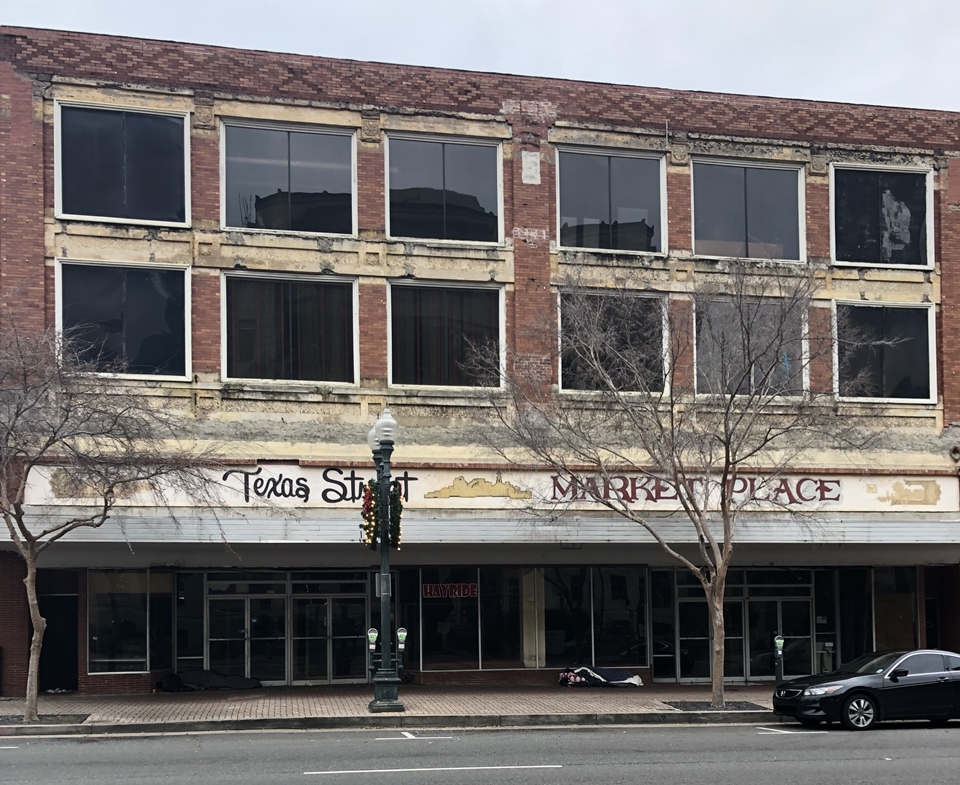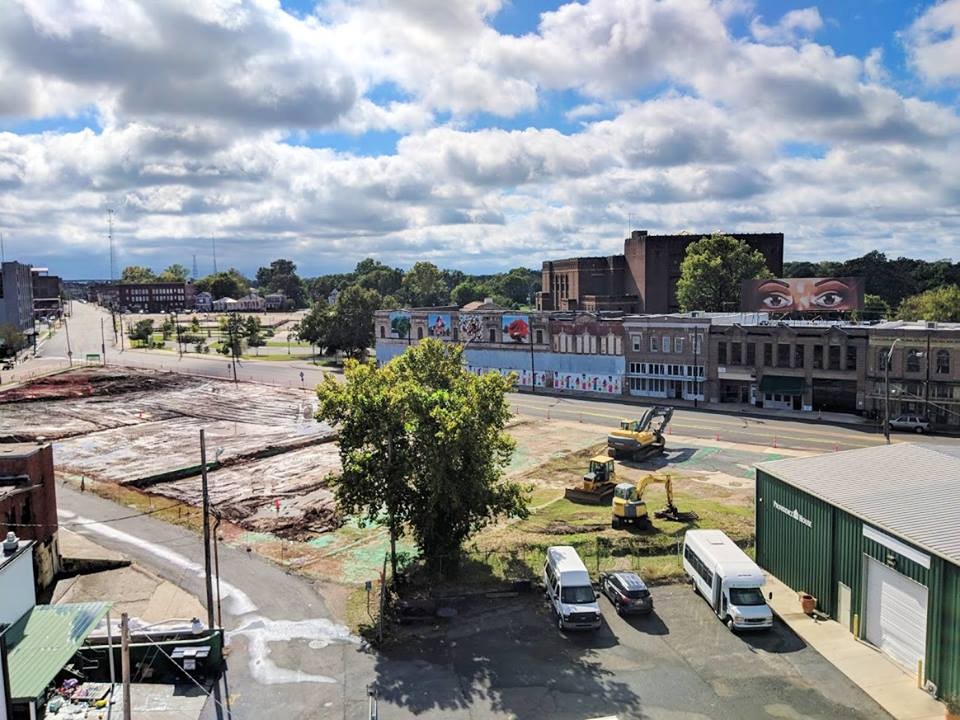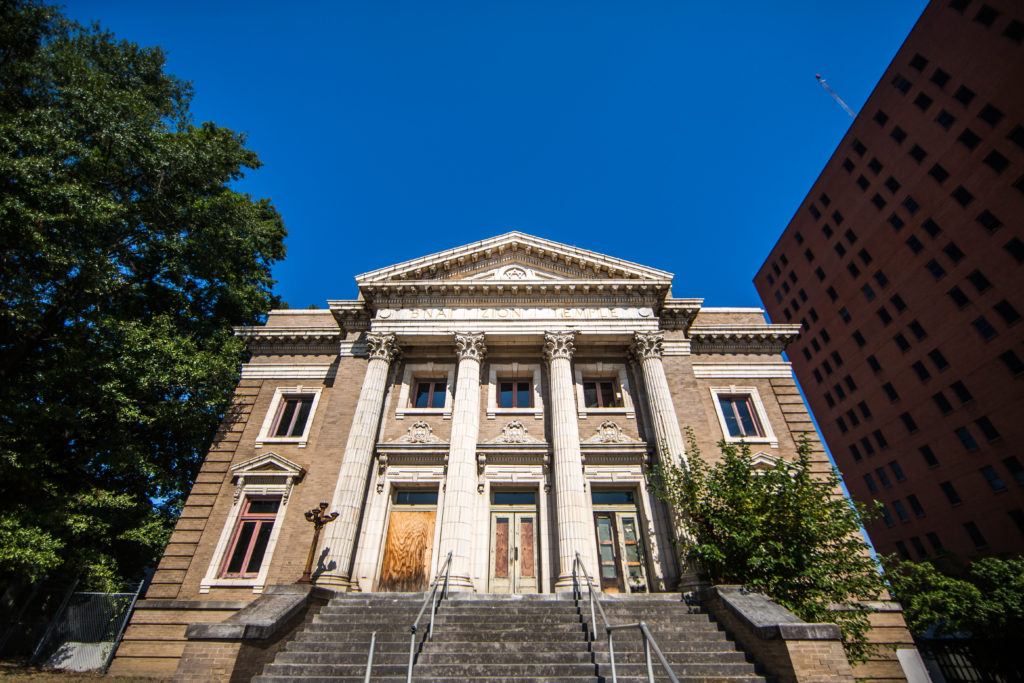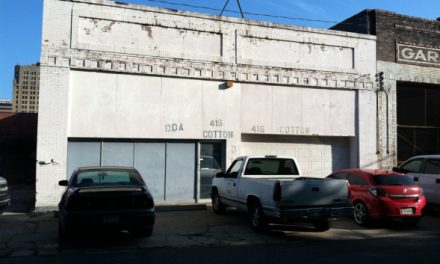(Reprinted from the Shreveport Times, Sunday, Sept. 22, 2019)
How much has changed in your life or in the way you think about things over the past 17 years? I’ll answer for you- a lot. In community terms, we have begun to more fully realize the dangers of aggressive annexation and urban sprawl to the long-term stability of cities.

516 Texas Street
We have realized that demolishing downtown buildings for parking lots creates far more damage than it corrects, and we are coming to the realization that we must ‘fix the real estate problem’ because it is killing us, a downward death spiral that most downtowns and many neighborhoods have felt powerless to change.

All the vacant lots in this photo used to have buildings.
At a conference I attended last week for downtown and Main Street directors and volunteers, speakers were adamant that governments, downtown organizations, neighborhood groups and civic-minded individuals do whatever is legal to get control of long-vacant real estate that is dragging us to despair. In downtown Shreveport I can paraphrase the entire issue in three words: B’nai Zion Temple.

The old B’Nai Zion Temple, designed by Edward Neild.
You know the structure- the majestic historic building sitting at the Common Street entrance to downtown, vacant for as long as anyone can remember, unused, not for sale, not available, not maintained. Stained glass windows damaged and swinging open, a basement filled with water, sad, forlorn, humiliating…not only to downtown but to our community as a whole. But oh, if B’Nai Zion were the only one. Drive around and you will see that it is not.

644 Milam Street, the original Saenger Drugstore
Downtown is being held hostage by owners either unable or unwilling to rehab their vacant property but also unwilling to sell it to someone who can and will. They are actively allowing their buildings to deteriorate, creating problems for adjacent properties and downtown as a whole. Property values of these vacant buildings have plummeted, affecting the value of everything around them. Our tax rolls suffer because of them. Our community suffers because of them. The properties become magnets for transients and vandalism and require more law enforcement resources. The buildings look bad, our view of our city suffers, our frustration increases, our pride in our home plummets. Jeff Siegler, founder of the blog Revitalize, or Die says apathy kills and nothing screams apathy like a long-vacant building in the heart of a downtown. ‘Downtown is about our buildings,’ he told our assembled group last week. ‘Our buildings are a reflection of us as a community.’ If that is true- and I believe strongly that it is- what do these buildings say about us?

114 Texas, with collapsed east wall.
Cities across the country are deciding that enough is enough and are creating methods to prevent property ‘accumulators’ from acquiring or inheriting square footage and doing nothing with it, and many are starting with their downtowns. Communities have set up vacant property registries, escalating vacant property registration fees; a variety of vacancy ordinances. By allowing owners who don’t care to run roughshod over those who do, we are giving them control. It is not about property rights, says Siegler of Revitalize, or Die. ‘The only people that ever complain about property rights are the deadbeat owners that have no interest in maintaining their property. The property rights we need to be concerned with are of that of the highly vested property owner and the potential developer. Their property rights are being infringed upon when the adjacent building is a fire hazard, falling down and housing a colony of dingoes.’ Dingoes aside, this is a problem that communities- large and small- are grappling with. No matter what city or town we call home, we can point to THAT embarrassing building, the vacant one falling to ruin that didn’t need to. The one affecting everything around it. The one that makes us MAD. Anger can sometimes be a good emotion. In cases like this, we can embrace the mad and move swiftly from mad to action. As Siegler says, ‘We can and must make our communities worthy of the people that call them home’ and finding a way – or ways- to deal with owners who just don’t care and the properties they hold captive – is one good way to start.




